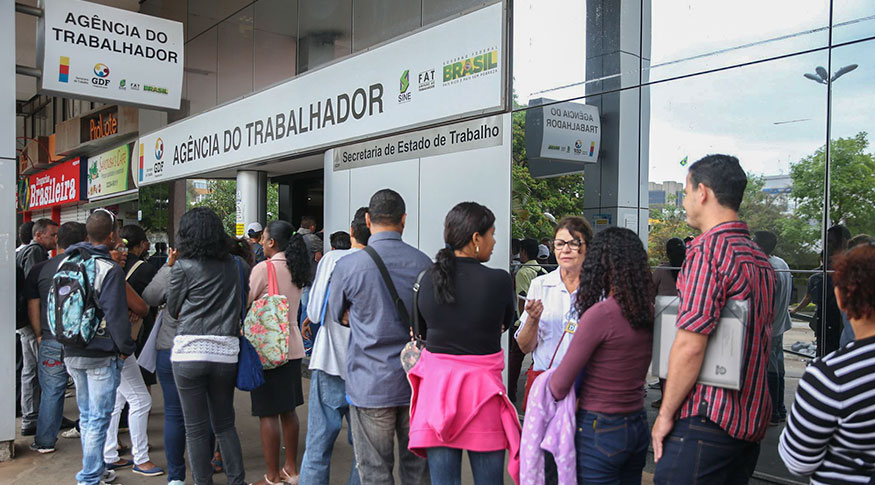PNAD Contínua
Highest unemployment in 13 capitals in Brazil over last 7 years
February 22, 2019 09h00 AM | Last Updated: February 22, 2019 03h37 PM

The average unemployment rate in 2018 was the highest of the last seven years in 13 capitals of Brazil, in the opposite direction of the national average rate, which reduced from 12.7% in 2017 to 12.3% last year. In addition to these capitals with high unemployment, the rate in Salvador (BA) also rose in 2018, though it peaked in 2015. It was unveiled by the Continuous National Household Sample Survey - PNADC, released today by the IBGE.
| Annual average unemployment rate in the capitals (%) - 2018 | |||||
|---|---|---|---|---|---|
| Porto Velho (RO) | 13.7 | Fortaleza (CE) | 10.8 | Rio de Janeiro (RJ) | 12.6 |
| Rio Branco (AC) | 13.9 | Natal (RN) | 13.5 | São Paulo (SP) | 14.2 |
| Manaus (AM) | 18.1 | João Pessoa (PB) | 11.9 | Curitiba (PR) | 9.4 |
| Boa Vista (RR) | 12.4 | Recife (PE) | 16.3 | Florianópolis (SC) | 6.5 |
| Belém (PA) | 13.4 | Maceió (AL) | 16.7 | Porto Alegre (RS) | 9.5 |
| Macapá (AP) | 18.2 | Aracaju (SE) | 16.4 | Campo Grande (MS) | 6.6 |
| Palmas (TO) | 13.7 | Salvador (BA) | 16.1 | Cuiabá (MT) | 10.0 |
| São Luís (MA) | 16.4 | Belo Horizonte (MG) | 12.5 | Goiânia (GO) | 7.0 |
| Teresina (PI) | 13.6 | Vitória (ES) | 12.5 | Brasília (DF) | 12.7 |
| Fonte: Pesquisa Nacional por Amostra de Domicílios Contínua | |||||
The Southeast was the region with the highest proportion of capitals with a record unemployment in 2018, with rises registered in Vitória (12.5%), Rio de Janeiro (12.6%) and São Paulo (14.2%). Half of the capitals in the North and two thirds of those in the Northeast were in this situation. Only the Central-West did not record any capital with a rise in the unemployment rate.
Eight metropolitan areas also increased their unemployment. To Cimar Azeredo, IBGE´s coordinator of Labor and Income, the comparison between the two geographic divisions points out the characteristics of the unemployment: "it is perceived that the problem is stronger in the major urban centers, following the largest concentrations of the population. It is a metropolitan unemployment, quite bigger than in the interior of the country".
Even in the states in which the unemployment dropped between 2017 and 2018, the situation did not improve in the long term. "We noticed that no capital or metropolitan area reduced its unemployment between 2014 and 2018. On the contrary, unemployment significantly increased in this period", explains Azeredo.
According to the researcher, the formal contract is another symptom, since it dropped in all the states between 2017 and 2018. In the longer term, the drops are even more significant since 2014. "This reveals the quality of the work being produced over the last years. Reducing the formal contracts and increasing the informality cause a drop in the contribution to the Social Security, which raises more problems ahead", concludes Azeredo.



















